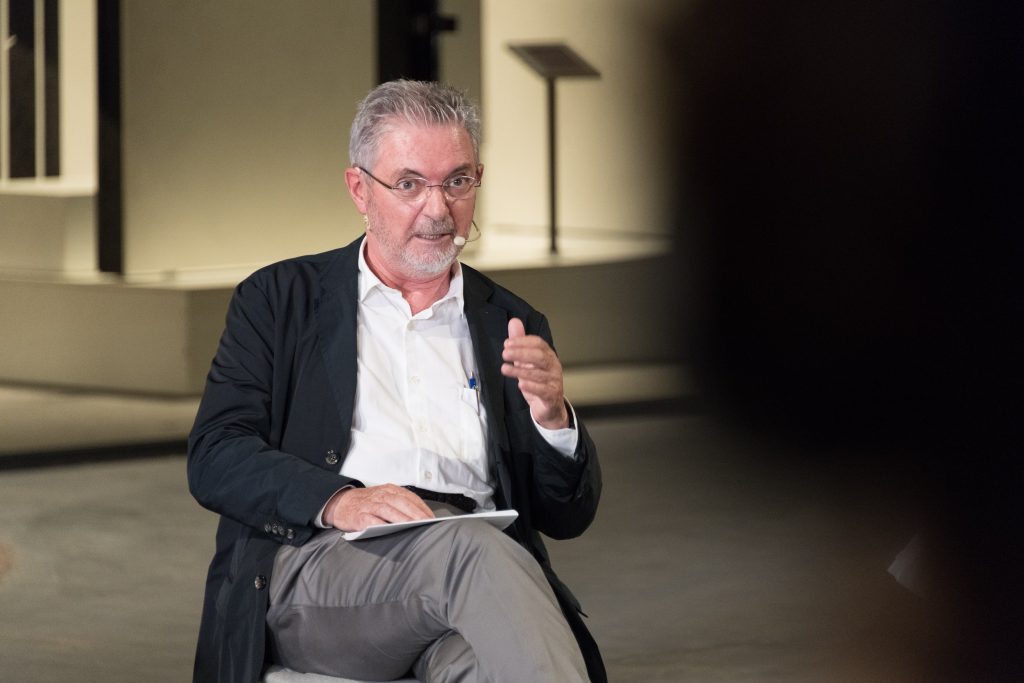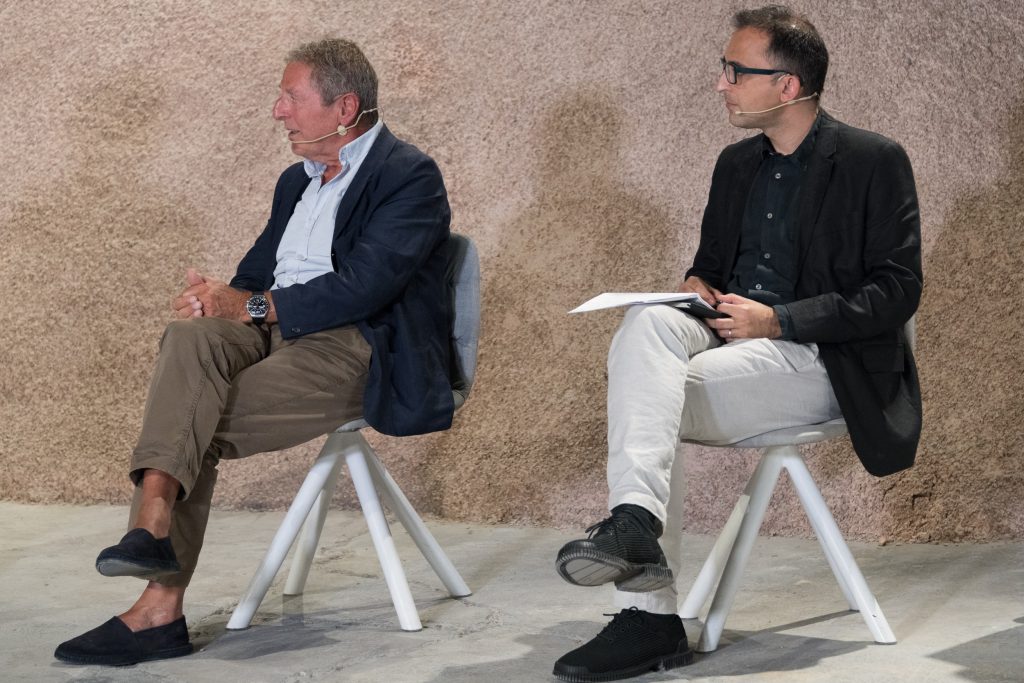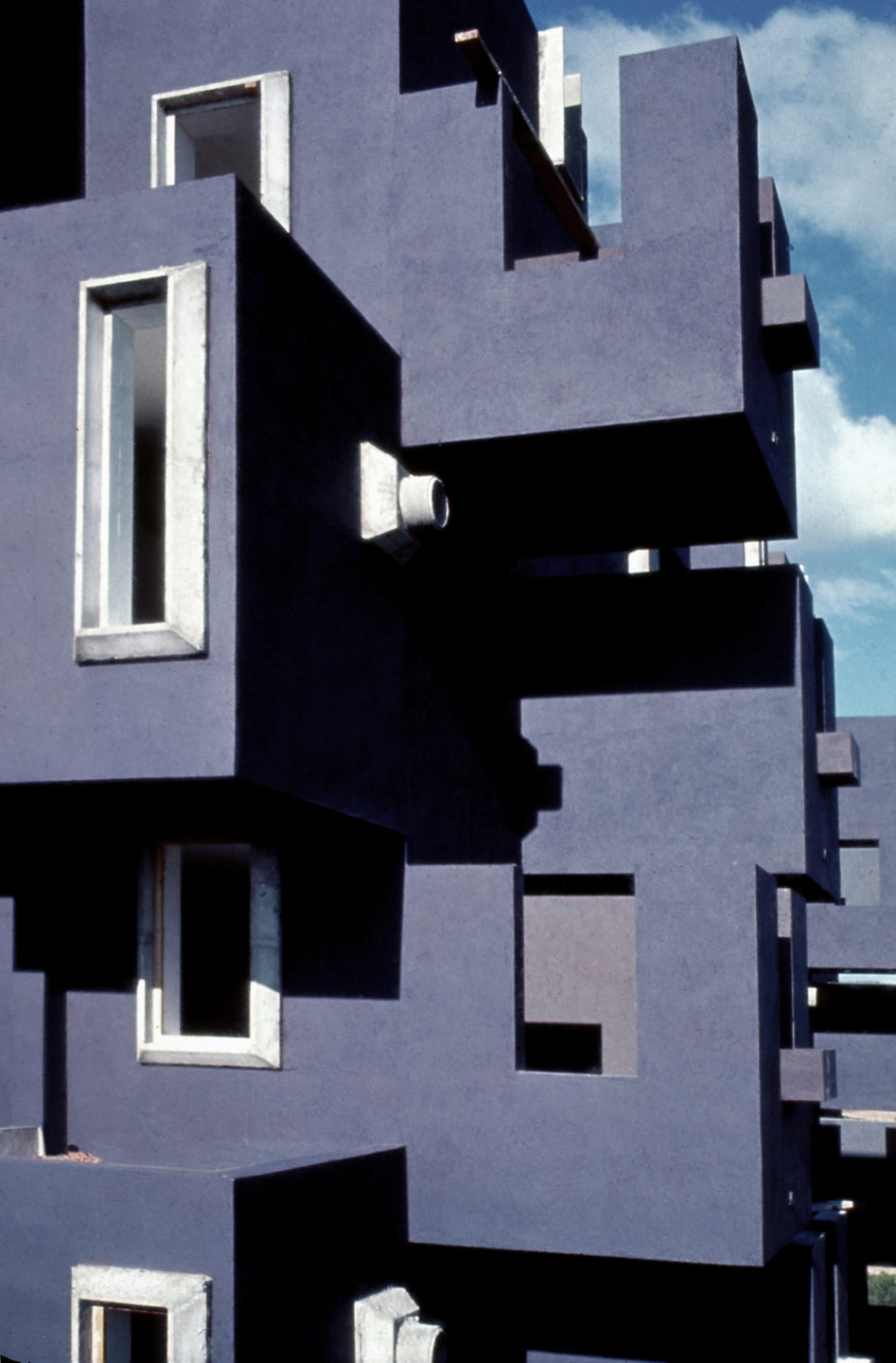Today, adapting to the environment is an essential part of contemporary living. At a time when the digital world is constantly expanding, being committed to our environs is ever more important.
The use of new technologies in COMPAC’s collaboration with Arquitectes per l’Arquitectura created a space for exchange. A digital gathering making the most of the undiscovered union between industry and architecture. A partnership that lays down the foundations for commitment to sustainability and innovation.
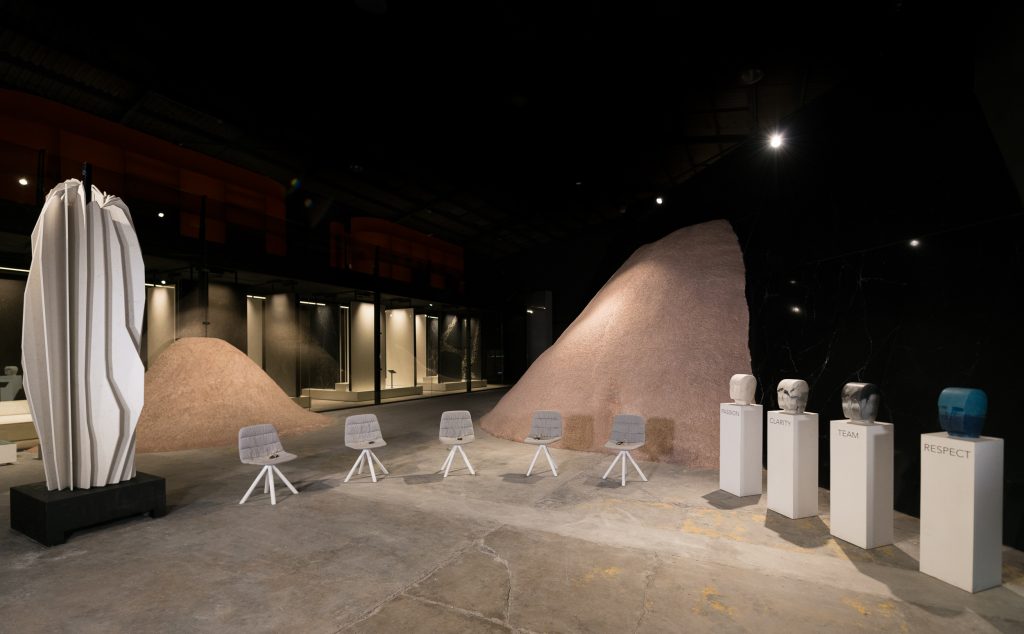
Exchanging ideas is synonymous with creativity and innovation. With a view to highlighting the relationship between industry and architecture, COMPAC organised the first webinar on Architecture and Materiality in collaboration with Arquitectes per l’Arquitectura. Experts from COMPAC’s team participated in the meeting alongside five renowned architects. They shared their thoughts on healthy architecture, personalisation, accessibility and technology used in the sector.
And what better place to host the event than the COMPAC showroom: a wonderful space where expanse and transparency play. A location where inspiration is ingrained in every nook, where material transforms into a sensorial aura.
An experience that defies monikers from the start of any visit through a play of lights, textures and sustainable raw materials that foster healthy architecture. Where sublimely powerful artistic pieces offer versatile inspiration to the sector.
Limitations fall away as innovation transfers from essence to material. This space provided these top-flight architects with the chance to appreciate how COMPAC’s materials adapt to each project. Materials and products that explore limits and turn obligations into opportunities. Indeed, it offers the chance to explore the possibilities of the materials COMPAC works with: Quartz, Obsidian and Marble.
The Panelists
Representatives from the surfaces company included: Paco Sanchis, COMPAC CEO; Miguel Valls, COMPAC Product Manager; Sergio Sanchis COMPAC Architecture & Projects Manager, and Montse Arnau, Key Account Manager (KAM) COMPAC Spain. The excellent panel of architects comprised: Ramón Sanabria, Chair of the Arquitectes per l’Arquitectura association; Lluís Vives, architect and founding partner of Serra Vives-Cartagena Arquitectes; Mara Partida, partner and co-founder of the Mendoza-Partida practice, and Josep Camps, partner and co-founder of the Camps-Felip Aquitecturia studio. This seminar was moderated by architect Alberto Peñín, a full professor at the Politècnica University of Catalonia (UPC).
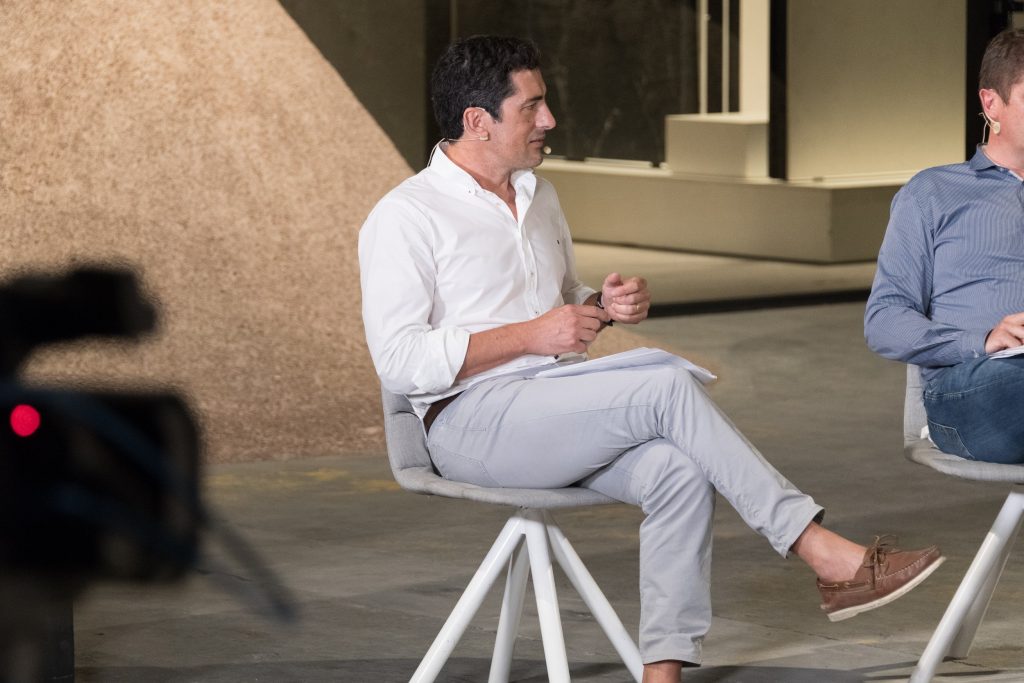
Moving forward on the challenges that materials represent in different architectural spaces was a key topic in the event. The company acknowledged the manufacturing of materials and solutions for architects in response to projects as an excellent proposal. These are values that underpin the company’s approach. Not only that, it also shows its pioneering commitment to sustainability and innovation, such as creating materials that respect the environment.
The COMPAC team started the webinar explaining the company’s origins that come from a deep passion to provide experience and dedication despite new challenges in modern architecture. They also highlighted the clarity and sharpness of their work. While providing studios with a customisable process, they create new solutions in line with real requirements. Thanks to its strong R&D&I department, the firm manufactures functional and aesthetic solutions adapting to the needs of architects. In fact, the team of multidisciplinary professionals are the cog that drives the entire machine. Nonetheless, above all this, respect for the environment and the profession is the basis of COMPAC’s approach. A constant target for enhancing the work of sector professionals.
The event was organised around four blocks: healthy architecture, personalisation of spaces, accessibility and technology in architecture, and material manufacture.
The importance of resistance in healthy architecture
At the start, conversations were focused on healthy architecture: designing hospitals and medical centres—Ramón Sanabria’s specialisation. Sanabria explained that this type of architecture requires resistant buildings and materials as they are places that see heavy use. Comfortable materials are also needed to ensure a room is pleasant for professionals, patients, visitors and anyone linked to hospitals and medical centres. Overall, materials that guarantee silence and rest for all visitors are important. But sterile materials to ensure cleanliness are also an essential factor for healthy architecture. Afterwards, Lluís Vives added that having one single material that could solve problems in building projects would be ideal. This is a challenge the industry is looking into. The solution is to manufacture materials that avoid joints or areas where bacteria or dust can accumulate.
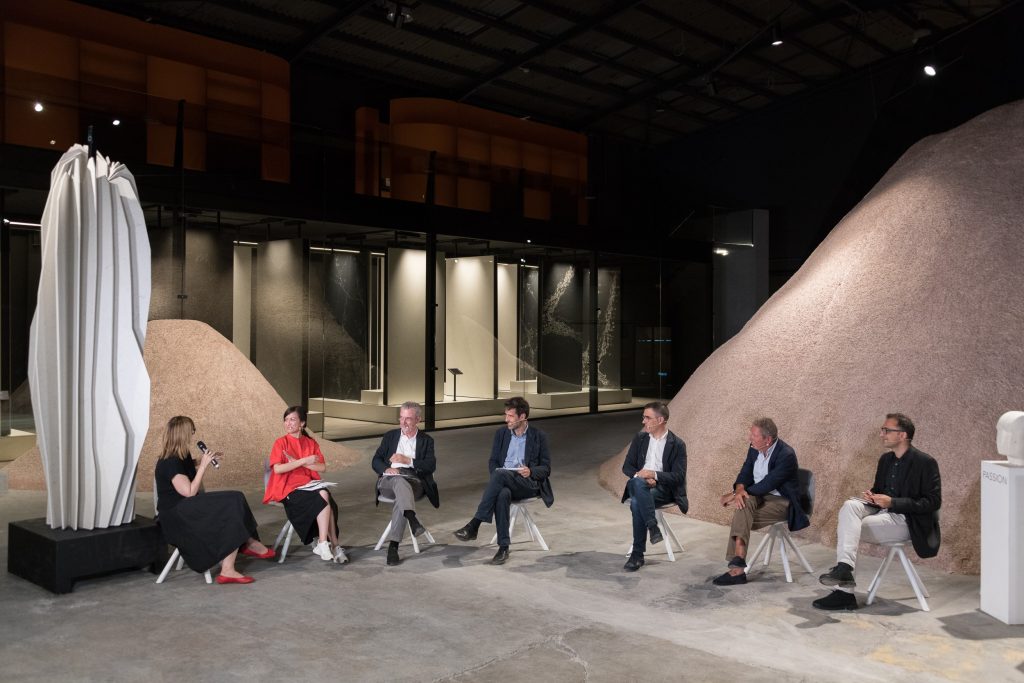
This reflection perfectly segued into the next block: personalisation of spaces.
Research into tailoring architectural spaces
Personalisation suggests adaptation. A concept that requires research and resources. This is why architecture and industry need to be on the same page, since industry provides solutions for projects. Mara Partida said these solutions multiply where there is synergy between both sectors. Next, Josep Camps highlighted the importance of understanding how the manufacture process works, how material is assembled, how it functions and what the possibilities are when it comes to manufacturing a product. In this respect, COMPAC’s approach to materials has a long run-in, starting with the design of the material itself, and moving on to composition, final look and use.
Architectural approaches based on accessibility
The third topic was accessibility to spaces, highlighting the role of industry in terms of materiality, and architecture in terms of design. Both contributions transform spaces into areas where anybody, regardless of their condition, has access, stated Lluís Vives. Ramón Sanabria, in turn, shared the reality of those with reduced vision. For Sanabria, flooring designs with different materials, textures, heights, etc. make their day-to-day lives more complicated. The chair of Arquitectes per l’Arquitectura reflected on this in the conviction that horizontal surfaces should be built from a single piece and created with hard large-sized materials that aid people with disabilities to move around. Here, Paco Sanchis highlighted the solutions offered by COMPAC from an aesthetic standpoint, with uniform long-lasting materials that allow for different shapes.
Technology as the nerve centre of change in architecture
For the final section of this interesting webinar focused on technology, participants debated how it is applied to techniques and processes, and how architecture uses new technological tools in spaces to respond to new challenges. Moreover, technology helps architecture and the manufacture of new materials that, in turn, enable projects and processes to be more sustainable. Along these lines, Josep Camps explained that improvements have an impact on the life-cycle of projects and on the amount of grey matter. New materials enable resources and functions to be optimised, i.e. technology offers the chance to move away from standardisation to provide tailored solutions. Mara Partida added that technology used in construction provides more sustainable options for industry as it saves both energy and time in processes, thus making for more efficient and environmentally-friendly structures.
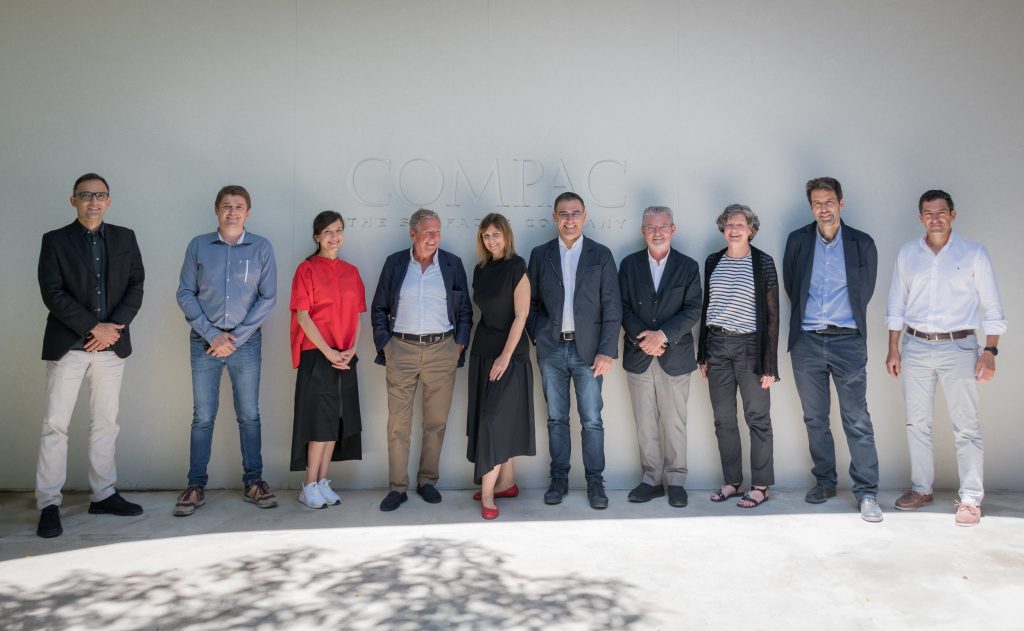
The meeting ended with a marvellous outlook of future ideas and challenges, emphasising the creation of easy-to-maintain and long-lasting materials—two important aspects for COMPAC when manufacturing its materials and prioritising a limitless life-span. Moreover, strengthening the good relationship between industry and architects and working in the same direction clearly provides better solutions.
The webinar was framed by the future, innovation and reflection. It was a space to focus on new challenges that go hand-in-hand with historically demanding requirements in the architecture and design sector.
.
.
.
Below is the video summary of the webinar on Architecture and Materiality organised by COMPAC and Arquitectes per l’Arquitectura.

